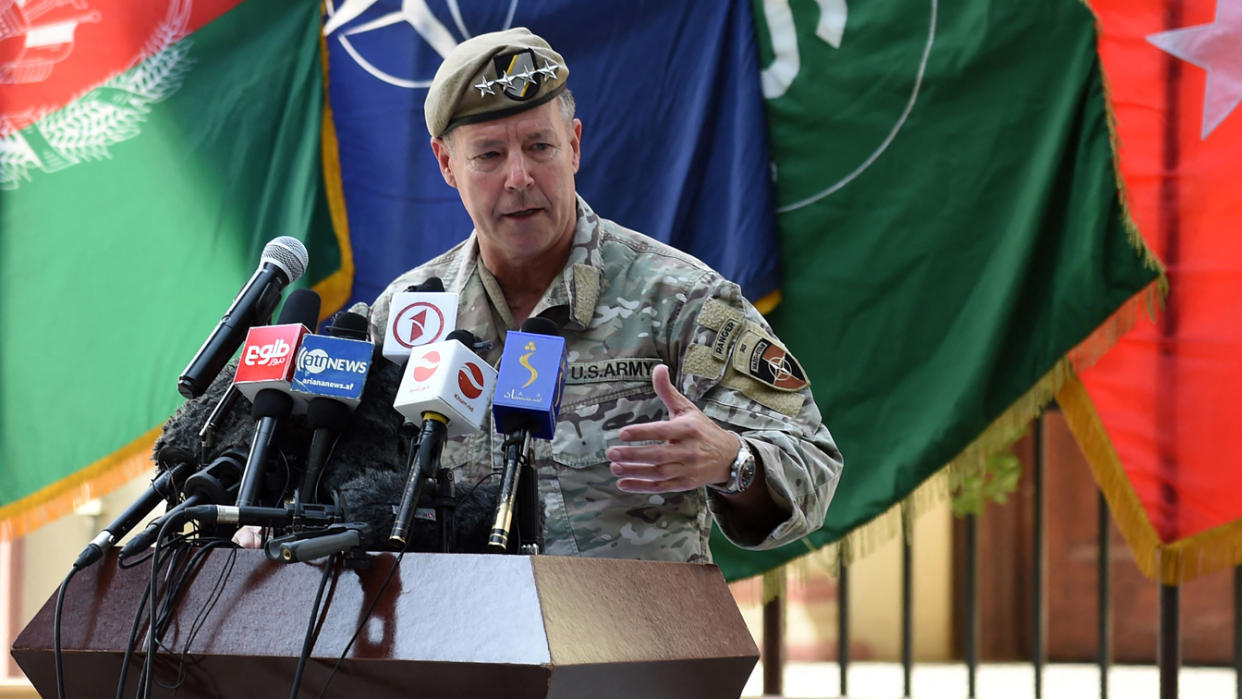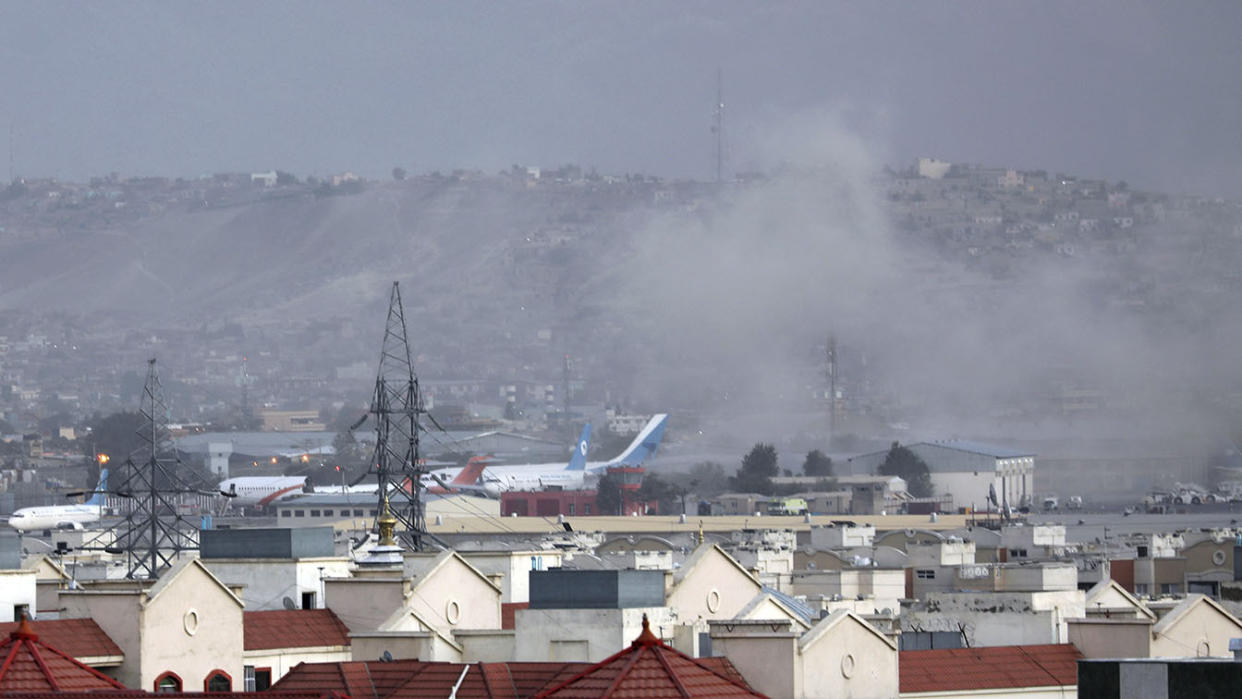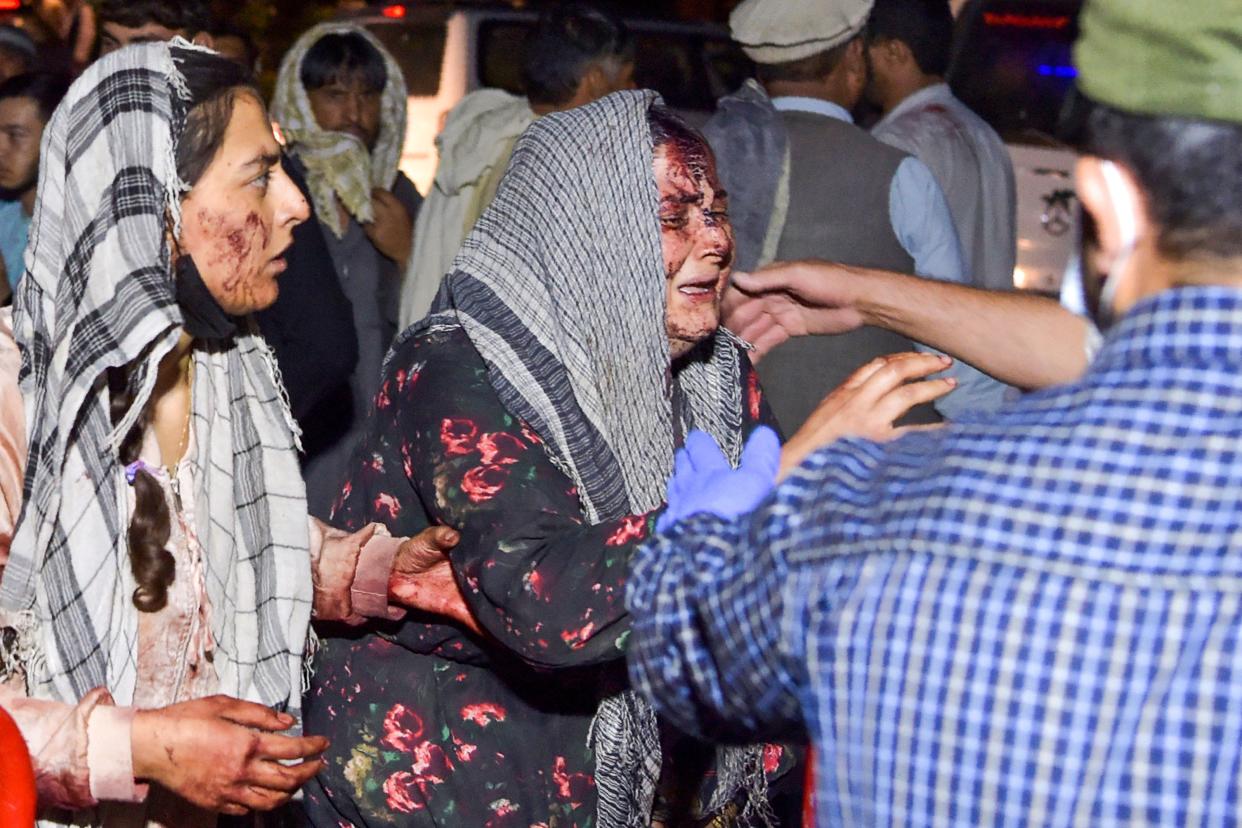Under Trump, national security officials battled over the ISIS-K threat
Three years ago, Christopher Miller, then the top counterterrorism official at the White House National Security Council, recalled a “strange report” that ISIS-K was planning an attack outside of Afghanistan and Pakistan.
The report “caused a great deal of consternation” within senior U.S. government counterterrorism circles, he recalled in an interview this week with Yahoo News.
A meeting, which Miller hosted, devolved into “this absolute throw-down” between counterterrorism experts from the National Security Agency, who were skeptical of the group’s capabilities, and analysts from the CIA, the Defense Intelligence Agency and the National Counterterrorism Center.

Some differences in analysis were due to good-faith disagreements on the nature of the ISIS-K threat, recalled Miller, who went on to serve as President Donald Trump’s acting Pentagon chief after the 2020 election. But Miller alleges that others within the intelligence community played up the group’s capabilities so as not to lose funding, which was increasingly being diverted to preparing for a potential conflict with Russia and China.
“I felt that they had heightened the threat because of bureaucratic ... turf wars,” recalled Miller.
Once an obscure threat, ISIS-K rose to prominence on Thursday, when its suicide bombers and gunmen attacked crowds outside the Kabul airport who were trying to be evacuated ahead of the impending U.S. withdrawal. Thirteen U.S. service members and dozens of Afghans were killed. President Biden has vowed retaliatory strikes against the terrorist group, saying, “We will hunt you down and make you pay.”
In spite of this week’s dramatic attack in Afghanistan, Miller contends the U.S. intelligence community repeatedly overhyped the ability of ISIS-K to launch external attacks against the U.S. beyond Afghanistan and Pakistan. Intelligence reporting on the group was “harrowing and alarmist,” he recalled.
By the end of the Trump administration, “ISIS-K was an absolute laughingstock shell of an organization, pathetic, eviscerated,” said Miller. “Now, if you listen to the intelligence community and the counterterrorism community, they will never say that. All they’ll say is, 'No, it’s a viable threat to the United States and has to be watched.' Yeah, I got all that. But at the end of the day, ISIS-K was starving out there.”

However, the group — an Islamic State affiliate based in Pakistan and Afghanistan whose membership is drawn largely from former Taliban members from both countries — maintained the ability to conduct a “major attack” within Afghanistan's cities every few months, said Miller.
ISIS-K’s transition from a rural insurgency, often battling the less radical Taliban, to an urban terror force was itself “based on the fact that their combat power was so attrited,” said Miller. “I did not for a moment think of them as dramatic — they certainly didn’t have transnational reach.”
Even if ISIS-K had aspirations to attack the United States, this did not translate into the capability to do so, something that even the Biden White House appears to be emphasizing. Hours after Thursday's attack in Kabul, White House press secretary Jen Psaki emphasized that an attack in Afghanistan “is very different from ISIS’s ability to attack the United States and attack the homeland.”
At least during the Trump administration, it appears the intelligence community disagreed with that assessment.
The intelligence community “would be like, ‘Oh, my gosh, they want to attack the United States,’" said Miller, "and I’m like, yeah, that’s one thing when they’re all sitting around the campfire at training camp talking shit, you know, versus — do they have the capability, and is that part of their doctrine and strategic goals? I never thought it was at that time. Now, that can change, but I never thought they were capable of projecting combat power into the United States or into the far enemy type thing.”

Miller was also skeptical of any collaboration or coordination between the Taliban and ISIS-K. There was “not a shred, not a nanoparticle, nothing” in terms of intelligence on a relationship between the two groups when he was at the Pentagon or National Security Council, he recalled.
“I don’t see any scenario where the Taliban and ISIS-K are going to join forces, but that was always the worst-case scenario that the [intelligence community] gave, and therefore with terrorism we were always going worst-case scenario," said Miller. “I just didn’t see them in alignment. I saw ISIS-K as a threat to the Taliban, and I think that still exists.”
Javed Ali, a former top U.S. counterterrorism official and now a professor at the University of Michigan, agrees that ISIS-K is primarily a problem for the Taliban.
Thursday’s attack “is a black eye for the Taliban, too,” Ali said, “because it shows that they don’t have the kind of control that they think they do in the country.”
U.S. counterterrorism officials were keenly aware of ISIS-K’s capacity for mayhem, recalled Ali, who served as a senior director of counterterrorism at the NSC in 2017 and 2018. ISIS-K “was clearly a priority” at the time, said Ali, “as were a lot of the other ISIS affiliates. ISIS core and the recognized affiliates were in the top tier of the threat spectrum.”
Even if it was not a direct international threat, Miller believed that the U.S military had to prepare for the contingency that ISIS-K or al-Qaida might try to reestablish terror training camps in Afghanistan after the U.S. withdrawal. “There was a huge amount of stress about how we would maintain intelligence capabilities to make sure we had indicators and warnings if al-Qaida or ISIS were massing in Afghanistan and establishing safe havens,” he recalled.

Counterterrorism officials believed that employing regular drone flights over Afghanistan would provide them the necessary data on major ISIS-K or al-Qaida encampments. But the Air Force, attempting to pivot to competition with China and Russia, was trying to move away from counterterrorism-related expenditures.
“That was a really big problem for us,” Miller said. “The Air Force would say, ‘You haven’t read the National Security Strategy — we’re focusing on great-power competition now, counterterrorism is no longer the priority, so we don’t need all these MQ-9s [drones].’”
“And we’re like, ‘No, we need more of them,’” Miller recalled saying.
“‘We’re going to keep MQ-9s flying over Afghanistan until ... the Taliban tell us not to,’” he said. “'And then we’re going to keep doing it.'”
____
Read more from Yahoo News:


